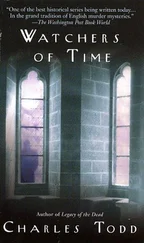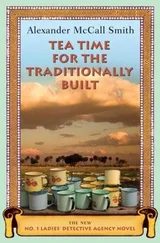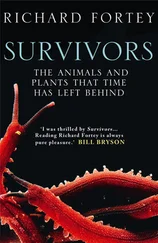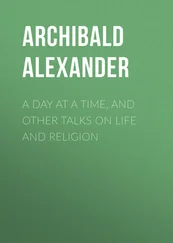Alexander Todd - A Time to Remember
Здесь есть возможность читать онлайн «Alexander Todd - A Time to Remember» весь текст электронной книги совершенно бесплатно (целиком полную версию без сокращений). В некоторых случаях можно слушать аудио, скачать через торрент в формате fb2 и присутствует краткое содержание. Город: Cambridge, Год выпуска: 1983, ISBN: 1983, Издательство: Cambridge University Press, Жанр: Химия, Биографии и Мемуары, на английском языке. Описание произведения, (предисловие) а так же отзывы посетителей доступны на портале библиотеки ЛибКат.
- Название:A Time to Remember
- Автор:
- Издательство:Cambridge University Press
- Жанр:
- Год:1983
- Город:Cambridge
- ISBN:0 521 25593 7
- Рейтинг книги:3 / 5. Голосов: 1
-
Избранное:Добавить в избранное
- Отзывы:
-
Ваша оценка:
- 60
- 1
- 2
- 3
- 4
- 5
A Time to Remember: краткое содержание, описание и аннотация
Предлагаем к чтению аннотацию, описание, краткое содержание или предисловие (зависит от того, что написал сам автор книги «A Time to Remember»). Если вы не нашли необходимую информацию о книге — напишите в комментариях, мы постараемся отыскать её.
A Time to Remember — читать онлайн бесплатно полную книгу (весь текст) целиком
Ниже представлен текст книги, разбитый по страницам. Система сохранения места последней прочитанной страницы, позволяет с удобством читать онлайн бесплатно книгу «A Time to Remember», без необходимости каждый раз заново искать на чём Вы остановились. Поставьте закладку, и сможете в любой момент перейти на страницу, на которой закончили чтение.
Интервал:
Закладка:
The incidents I have described were amusing, but in no way detracted from a most impressive celebration of the Consejo Superior's birthday. In my experience, the Spaniards are extremely friendly and hospitable people, and, when they decide to have a celebration, it is always on an impressive scale. A further example occurred in 1953 when my wife and I attended the Jubilee (Bodas de Oro) of the Spanish Chemical Society in Madrid, and again later, when I received an honorary doctorate from the University of Madrid in 1959.
I spent a good deal of time overseas in 1950 for, apart from the short trips to Spain and to Germany which I have mentioned, it was in that year that I made my first visit to Australia. I received an invitation from the Royal Australian Chemical Institute to lecture in the state capitals, and also one to be Visiting Professor of Chemistry at the University of Sydney for the Australian spring term (September-December 1950). I had always wanted to visit Australia, and, although, unfortunately, Alison was unable to accompany me, I accepted the invitation and set out by air in mid-August. The flying-boat service had ceased by then, but I had a marvellous trip out on a Qantas Constellation. From London we flew to Rome, where we were provided with picnic lunches, put on a bus, and given a tour of the city before re-embarking for Cairo, where we arrived late in the evening. We had late dinner, and it was such a beautiful moonlit night that, instead of going to bed, I, with one or two fellow passengers, hired a car and visited the pyramids, where we spent a marvellous couple of hours. At dawn we took off again, and with a couple of intermediate stops came down very late at Singapore where we were Qantas guests until a day and a night later we took off again early in the morning for Darwin. The weather was fine, and the volcanic peaks of Java, the tips of which seemed almost level with the plane, were quite magnificent. Shortly after leaving Singapore the captain announced that, after much haggling, an agreement about landing rights had been signed by Australia and Indonesia the previous day, and that he had been asked to be the guinea-pig and call at Jakarta. This we did; I would hardly describe our welcome as warm, and we were all locked up in a kind of shed with an armed guard outside until summoned to re-embark about an hour or so later. All I saw of Jakarta from our shed was the airport road; what impressed me most was that it was swarming with people, and that almost every woman of child-bearing age appeared to be either pregnant or carrying an infant on her back. At Darwin we stopped only to refuel, and went on overnight to Sydney where we touched down at Mascot airport at precisely the time stated in the Qantas timetable - 7.30 a.m. I have given a rather detailed account of the trip, partly because the air trip to Australia was then a very gentlemanly voyage, contrasting strongly with the rushed trip one has nowadays.
I fell in love with Australia at once, and, although I have visited it many times since, I still remember my first contact -the vastness, the uniform grey green of the vegetation, the strangeness of both flora and fauna, and the eerie silence of the bush. I liked the people, too, and got on very well with all types, and not merely with the academics. I moved around so much that I did not spend a great deal of time in the University of Sydney, and, although I delivered a few lectures, I did not give a formal course. R. J. W. Le Fevre, the head of the chemistry department, and his wife Cathie were extremely hospitable and helped make my stay a happy one, but he was having a difficult time. He had come to Sydney from London at the end of the war to inherit a department whose members were at loggerheads with one another, and, in some cases, resentful of Le Fevre's appointment. This sad state of internal strife seems to have dogged Sydney chemistry ever since I have known it, and it has, in my view, prevented what could easily have become a great school from realising its true potential; it has produced some really outstanding men like Cornforth and Birch, but they have all made their triumphs elsewhere. Even today, I have the impression that tension still exists there. I visited all the capital cities and, with my hosts in each of them, saw quite a bit of the surrounding country, from the sugar cane fields and rain forests of Queensland to the desert, aflame with wild flowers, in Western Australia. I think that, on the whole, I was most attracted by Perth and Adelaide, and I was particularly impressed by the University of Adelaide which, unlike most of the others, seemed to have achieved some kind of rapport with the state government, whereas there appeared (to me at least) to be little sympathy between state and university elsewhere, although all of the universities were state organisations. In Adelaide I stayed with the professor of chemistry, that friendly, talkative Ulsterman, A. K. Macbeth, and spent quite a bit of time moving around the vineyards with that rumbustious character, Hedley Marston, who did so much for agriculture and the livestock industry in Australia, through his trace metal studies. He was something of a bon viveur - I recall that, when I stepped off the plane at the old Parrafield airstrip, he lurched towards the plane brandishing a walking stick and bellowing 'Look Alex - I've managed it at last - gout!' Dear old Hedley; he was always a thorn in somebody's flesh, but was, none the less, a great Australian. I still remember vividly trips through the bush country beyond Victor Harbour with Hedley and Mark Mitchell, the professor of biochemistry at Adelaide, where flocks of galahs used to swoop through the ghostly twisted gum trees, and leave behind them a bush which seemed even more silent than it was before. I learned a lot about Australia and its scientific and technical problems on these excursions.
In 1950 Australia was, in many ways, a fascinating country. It made me think of a giant who had for long been fast asleep, but was now beginning to stir before waking up. Architecturally and socially its cities were like transplants from pre-war Britain, although in politics and in labour relations they seemed to me much more raw and aggressive. It was an interesting time from an academic viewpoint, for the university scene was on the threshold of great changes. The creation of a university of technology in Sydney had been agreed, and some staff appointments had been made in 1949 although the new university (now the University of New South Wales) had as yet no buildings of its own, and, when I was there in 1950, most of its work was being carried on in the Sydney Technical College, which was (and, I believe, still is) located in Ultimo, not very far from the University of Sydney. Philip Baxter (now Sir Philip), the professor of chemical engineering in this new university, had taken up office about a year before I visited Sydney; I had known him in England, where he was Research Director at I.C.I. Ltd General Chemical Division at Widnes. We had been associated, partly through chemical defence work during the war, and subsequently in my capacity as consultant for several years to the General Chemical Division. He and his wife were very kind to me in Sydney, and I was greatly impressed by the way in which he was getting a grip on things, not only as regards chemical engineering in the new university, but through his development, even at that early stage, of good relations with the government of New South Wales, and the way he appeared to be taking a leading part in matters relating to atomic energy. At the time of which I write, the Vice-Chancellorship of the infant university was temporarily occupied by a civil servant from the New South Wales Department of Education, but it was clear that he was, in effect, just a stop-gap until the university had premises of its own. That, I confess, seemed to me a long time off. Philip Baxter took me one warm and sunny morning to see the university site at Kensington, where building was said to have begun. It consisted of a large open space with, somewhere near the middle, a brick wall about thirty feet long by ten feet high, evidently the beginning of a larger structure; at the base of the wall, on its shady side, reclined half a dozen builder's men apparently asleep. Such hives of activity seemed to me to be not uncommon on construction sites in Sydney, so I reckoned (erroneously, as it turned out) that the University of New South Wales would take a long time to develop. One thing was clear to me, however - Philip Baxter would surely take over as Vice-Chancellor; this he did, in due course, and the impressive new university is in effect a monument to his ability and drive.
Читать дальшеИнтервал:
Закладка:
Похожие книги на «A Time to Remember»
Представляем Вашему вниманию похожие книги на «A Time to Remember» списком для выбора. Мы отобрали схожую по названию и смыслу литературу в надежде предоставить читателям больше вариантов отыскать новые, интересные, ещё непрочитанные произведения.
Обсуждение, отзывы о книге «A Time to Remember» и просто собственные мнения читателей. Оставьте ваши комментарии, напишите, что Вы думаете о произведении, его смысле или главных героях. Укажите что конкретно понравилось, а что нет, и почему Вы так считаете.










